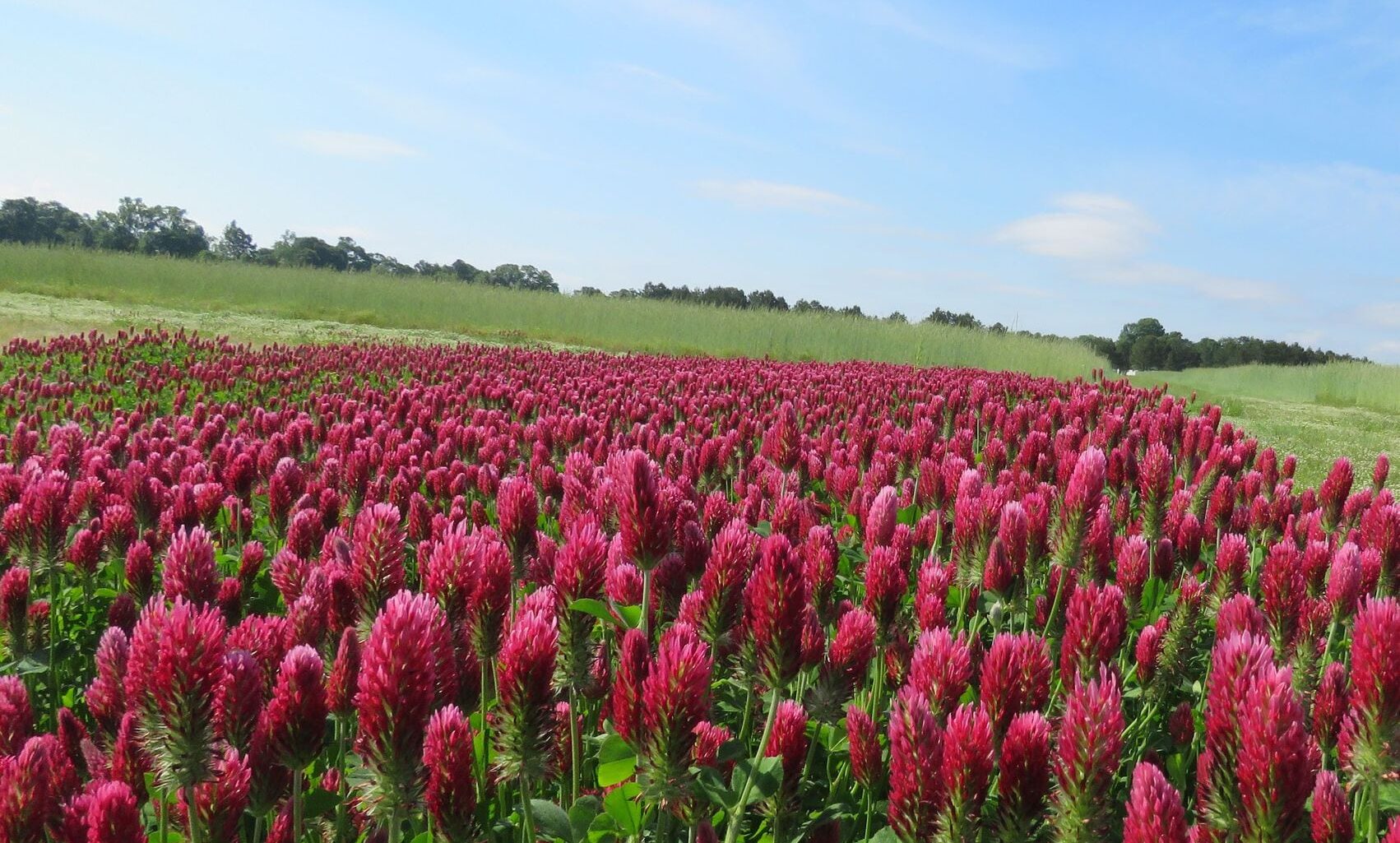Cover Crops

Winter Pea
Pisum sativum: Producers should plant winter pea in September. Winter pea grows on a vine, similar to vetch. This cold-hardy, annual legume can provide lots of residue, but may decompose quickly because of the high nitrogen content. Winter pea can provide up to 150 pounds of nitrogen per acre. This legume provides very good erosion control and forage quality. It is also a great cover crop to help attract beneficial insects.
Download a PDF to learn more about winter pea.
Iron Clay Cowpea
Vigna unguiculata L. cv. ‘Iron Clay’: Cowpeas originated in Africa and have been bred by farmers for thousands of years for different uses and situations. Producers should plant cowpea when soil temperatures reach 65 degrees Fahrenheit, 9 weeks before the first frost. The ‘Iron Clay’ cowpea, a summer annual, is a common southeastern cover crop. The Iron Clay Cowpea is heat-tolerant and handles drought well. It can grow in poor soils or moderate shade. Iron Clay Cowpea provides excellent weed and erosion control. It is also a very good attractor of beneficial insects.
Download a PDF to learn more about Iron Clay Cowpea.
Crimson Clover
Trifolium incarnatum: Crimson clover is a winter annual legume in the Southeast and can accumulate up to 5,500 pounds of residue if planted early. Producers should plant crimson clover in August and September. Crimson clover provides excellent forage quality. It is also very good at providing weed and erosion control.
Download a PDF to learn more about crimson clover.
Hairy Vetch
Vicia villosa: Hairy vetch is a winter legume that provides heavy residue to protect the soil and choke out weeds. Plant hairy vetch 15 to 45 days before the killing frost. This legume produces about 100 pounds of nitrogen per acre. Hairy vetch is an excellent cover crop for attracting beneficial insects. It is also a good cover crop for weed and erosion control.
Find more information on hairy vetch in a downloadable PDF.
Sunn Hemp
Crotalaria juncea: Sunn hemp is a summer legume that is native to India and Pakistan. Plant sunn hemp at least 9 weeks before the average frost. This summer legume can produce 120 pounds of nitrogen per acre in two to three months. It is an excellent cover crop for compaction reduction and weed and nematode control. Sunn hemp is a very good cover crop for erosion control.

